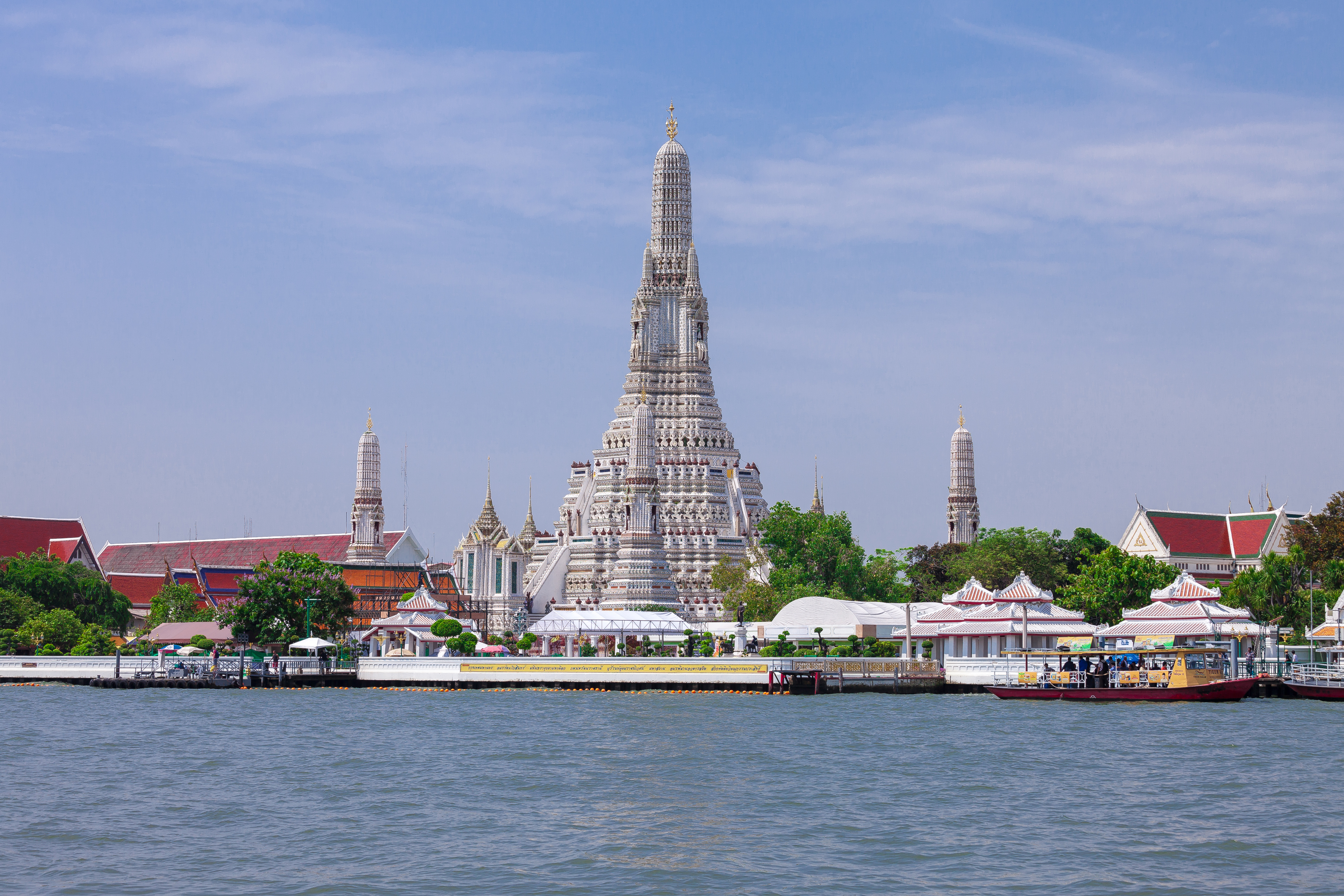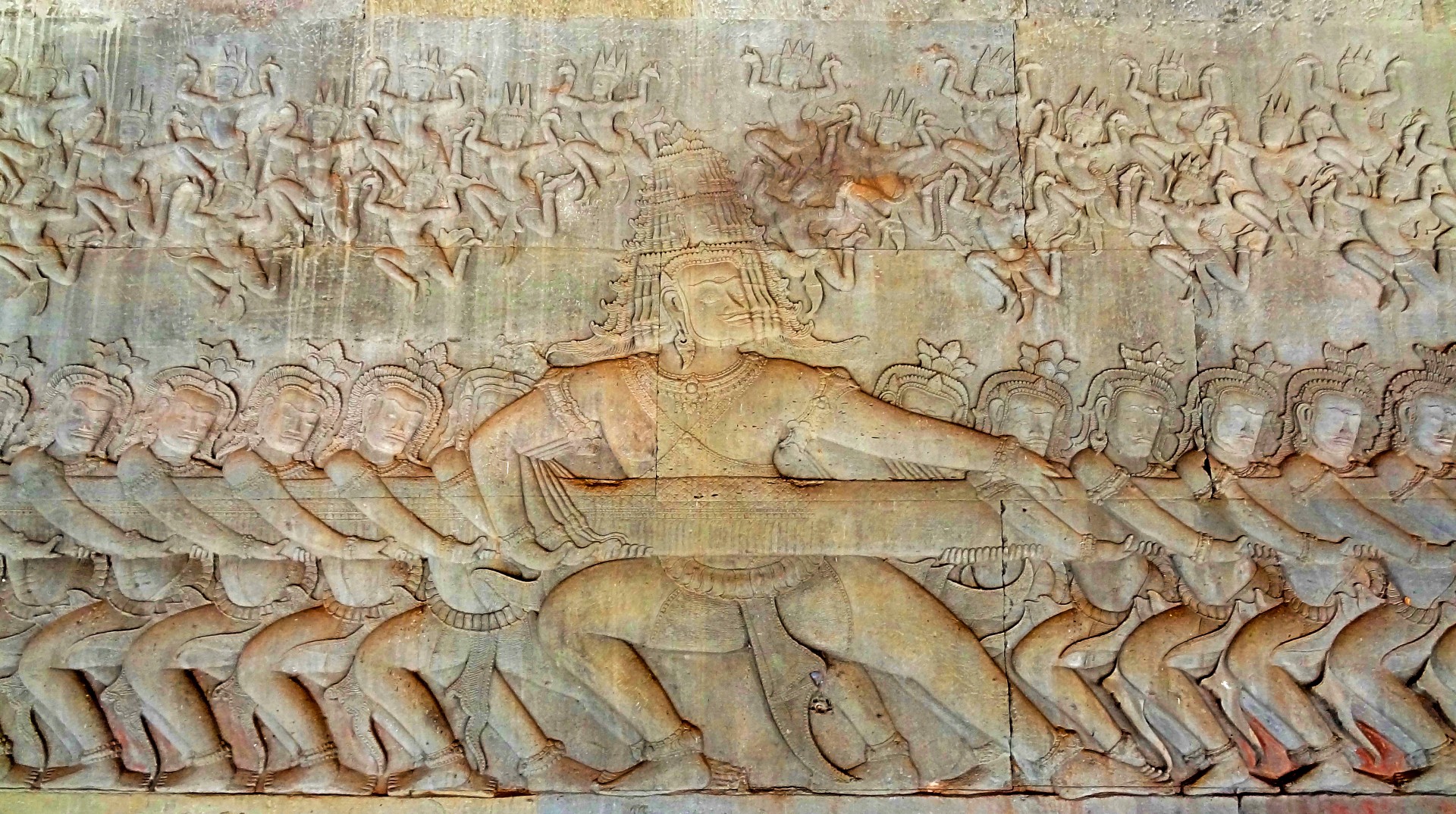|
Yāma
Yāma is the third of the six heavenly worlds of the desire realm in Buddhist cosmology. It is located between Trāyastriṃśa and Tushita. This world is variously translated as "wonderful times", "virtuous", "excellent times" or "of the hours." It is said that the Yāma heaven is always illuminated so that there is no division of day and night. The gods here enjoy satisfaction of the five desires, which arise in relation to the five sense organs. Etymology ''Yāma'' is a Sanskrit technical term referring to a measurement of time, similar to a "watch" in English. A 24-hour day is divided into eight three-hour "watches", which makes a ''yāma'' equal to 1/4 of a day or night. An equivalent unit of time is a prahar, which is synonymous with the modern pahar. A Chinese text referred to as the ''Sse-kiau-tsih'' reads that the gods of this world distinguish time by the opening and shutting of flowers. There are several Chinese translations / kanji transcriptions of the name Yāma, ... [...More Info...] [...Related Items...] OR: [Wikipedia] [Google] [Baidu] |
Buddhist Cosmology
Buddhist cosmology is the description of the shape and evolution of the Universe according to Buddhist Tripitaka, scriptures and Atthakatha, commentaries. It consists of a temporal and a spatial cosmology. The temporal cosmology describes the timespan of the creation and dissolvement of alternate universes in different aeons. The spatial cosmology consists of a vertical cosmology, the various planes of beings, into which beings are reborn due to their merits and development; and a horizontal cosmology, the distribution of these world-systems into an infinite sheet of existential dimensions included in the cycle of samsara. The entire universe is said to be made up of five basic elements of Earth (classical element), Earth, Water (classical element), Water, Fire (classical element), Fire, Air (classical element), Air and Aether (classical element), Space. Buddhist cosmology is also intwined with the belief of Karma in Buddhism, Karma. As a result, some ages are filled with pr ... [...More Info...] [...Related Items...] OR: [Wikipedia] [Google] [Baidu] |
Tushita
Tuṣita (Sanskrit and Pāli) or Tushita is one of the six deva-worlds of the Buddhist Desire realm (Kāmadhātu), located between the Yāma heaven and the heaven. Like the other heavens, Tuṣita is said to be reachable through meditation. It is the heaven where the Bodhisattva ''Śvetaketu'' ("White Banner") resided before being reborn on Earth as Gautama Buddha, the historical fourth Buddha. It is, likewise, the heaven where the Bodhisattva ''Nātha'' ("Protector") currently resides, who will be reborn as the future fifth Buddha Maitreya. Most Buddhist scriptures state that Queen Mayadevi died seven days after giving birth at Lumbini to her son Prince Siddhartha, who became Gautama Buddha or the Buddha, and that she was reborn in the Tushita Heaven. Then seven years after the Buddha's enlightenment, Mayadevi came down to visit Tavatimsa Heaven, where the Buddha specifically preached the Abhidharma to her, and to the other gods in the realm. In Hinduism, the Tushitas are ... [...More Info...] [...Related Items...] OR: [Wikipedia] [Google] [Baidu] |
Wylie Transliteration
Wylie transliteration is a method for Transliteration, transliterating Tibetan script using only the letters available on a typical English-language typewriter. The system is named for the American scholar Turrell V. Wylie, who created the system and published it in a 1959 ''Harvard Journal of Asiatic Studies'' article. It has subsequently become a standard transliteration scheme in Tibetan studies, especially in the United States. Any Tibetic languages, Tibetan language romanization scheme faces the dilemma of whether it should seek to accurately reproduce the sounds of spoken Tibetan or the spelling of written Tibetan. These differ widely, as Tibetan orthography became fixed in the 11th century, while pronunciation continued to language change, evolve, comparable to the English orthography and French orthography, which reflect late medieval pronunciation. Previous transcription schemes sought to split the difference with the result that they achieved neither goal perfectly. Wyl ... [...More Info...] [...Related Items...] OR: [Wikipedia] [Google] [Baidu] |
THL Simplified Phonetic Transcription
The THL Simplified Phonetic Transcription of Standard Tibetan (or ''THL Phonetic Transcription'' for short) is a system for the phonetic rendering of the Tibetan language. It was created by David Germano and Nicolas Tournadre and was published on 12 December 2003. It is essentially a simplified form of the Tournadre Phonetic System, which is used by Tournadre in his Tibetan-language textbooks. THL (formerly THDL) stands for the " Tibetan and Himalayan Library" project, which is hosted at the University of Virginia The University of Virginia (UVA) is a Public university#United States, public research university in Charlottesville, Virginia, United States. It was founded in 1819 by Thomas Jefferson and contains his The Lawn, Academical Village, a World H .... Overview Onsets [...More Info...] [...Related Items...] OR: [Wikipedia] [Google] [Baidu] |
Kāmadhātu
The desire realm (Sanskrit: कामधातु, ''kāmadhātu'') is one of the trailokya or three realms (Sanskrit: धातु, ''dhātu'', Tibetan: ''khams'') in Buddhist cosmology into which a being caught in '' '' may be reborn. The other two are the Form Realm (Sanskrit: ''rūpadhātu'') and the Formless Realm (''ārūpadhātu''). Within the desire realm are either five or six domains (Sanskrit: ''gati'', also sometimes translated as "realm"). In Tibetan Buddhism, there are six domains (), and in Theravada Buddhism there are only five, because the domain of the Asuras is not regarded as separate from that of the Nāgas. The concept of these five realms is also to be found in Taoism and Jainism. The ''Śūraṅgama Sūtra'' in Mahayana Buddhism regarded the 10 kinds of Xian as separate immortal realms between the deva and human realms. The six domains of the desire realm are also known as the "six paths of s ... [...More Info...] [...Related Items...] OR: [Wikipedia] [Google] [Baidu] |
Trāyastriṃśa
The (Sanskrit; Pali ), (''Tushita''; ''Heaven of the Thirty-three''), is an important celestial realm of the devas in Buddhist cosmology. The word ' is an adjective formed from the numeral ', or "33" and can be translated in English as "belonging to the thirty-three devas". It is the name of the second of the six heavens of the desire realm in Buddhist cosmology, and used by the devas who dwell there. Trāyastriṃśa is ruled by Śakra, also known as Indra. Description The heaven is the second of the heavens of the Kāmadhātu, just above ''Catumaharajika'' or the realm of the Four Heavenly Kings, and is the highest of the heavens that maintains a physical connection with the rest of the world. is located on the peak of Sumeru, the central mountain of the world, at a height of 80 ''yojanas'' ; the total area of the heaven is 80 yojanas square. This heaven is therefore comparable to the Greek Mount Olympus in some respects. According to Vasubandhu, inhabitants of ... [...More Info...] [...Related Items...] OR: [Wikipedia] [Google] [Baidu] |
Prahar
Prahara is a Sanskrit term for a unit of time, or subdivision of the day, approximately three hours long. Definition The day is divided into eight parts: four ''prahara''s for the day, and four for the night. The first ''prahara'' of the day begins at sunrise, and the fourth ''prahara'' of the day ends at sunset. A second round of four ''prahara''s unfolds during the night, between sunset and sunrise. The traditional system of ''prahara''s overlaps with the traditional system of muhurtas also, which is based on precise astronomical calculations. Thus, the day can be regarded as divided into eight ''prahara''s (of three hours each) or thirty ''muhurta''s (of 48 minutes each). In both systems, the day commences with sunrise. The timing of the two systems coincides only at sunrise and sunset (four ''prahara''s coincide with fifteen ''muhurta''s at the twelve-hour, or 720-minute, point). History In the ancient Puranas, the day is divided into eight ''praharas'': four for the day an ... [...More Info...] [...Related Items...] OR: [Wikipedia] [Google] [Baidu] |
Pahar
Pahar (Bengali পহর, Hindi/ Nepali: पहर, Punjabi: ਪਹਾੜ, Urdu: ), which is more commonly pronounced peher () is a traditional unit of time used in India, Pakistan, and Bangladesh. One ''pahar'' nominally equals three hours, and there are eight ''pahars'' in a day. In India, the measure is primarily used in North India and by Hindi-speaking communities throughout the Deccan in Southern India. Etymology is derived from Sanskrit word which is an ancient unit of time in India. The word has the same root as the Hindustani word (meaning "to stand guard") and (literally "guard/watchman"). It literally means a "watch" (i.e. period of guard-duty). Timing Traditionally, night and day were each allocated four ''pahars'', or "watches." The first ' of the day (or ') was timed to begin at sunrise, and the first ''pahar'' of the night (') was timed to begin at sunset. This meant that in the winter the daytime ''pahars'' were shorter than the nighttime ''pahars,'' and ... [...More Info...] [...Related Items...] OR: [Wikipedia] [Google] [Baidu] |
Asuras
Asuras () are a class of beings in Indian religions, and later Persian and Turkic mythology. They are described as power-seeking beings related to the more benevolent Deva (Hinduism), Devas (also known as Suras) in Hinduism. In its Buddhism, Buddhist context, the word is translated as "Titan (mythology), titan" or "wiktionary:antigod, antigod". According to Hindu texts, the asuras are in constant fear of the devas. Asuras are described in Indian texts as powerful superhuman Demigod#Hinduism, demigods with good or bad qualities. In early Vedic literature, the good Asuras are called ''Adityas'' and are led by Varuna, while the malevolent ones are called ''Danava (Hinduism), Danavas'' and are led by Vritra. In the earliest layer of Vedic texts, Agni, Indra and other gods are also called Asuras, in the sense of their being "lords" of their respective domains, knowledge and abilities. In later Vedic and post-Vedic texts, the benevolent gods are ... [...More Info...] [...Related Items...] OR: [Wikipedia] [Google] [Baidu] |
Pāli Canon
The Pāḷi Canon is the standard collection of scriptures in the Theravada Buddhism, Buddhist tradition, as preserved in the Pāli language. It is the most complete extant Early Buddhist texts, early Buddhist canon. It derives mainly from the Tamrashatiya school. According to Buddhist tradition, during the First Buddhist Council, three months after the parinibbana of Gautama Buddha in Rajgir, Ananda recited the Sutta Piṭaka, Sutta Pitaka, and Upali recited the Vinaya Piṭaka, Vinaya Pitaka. The Arhats present accepted the recitations, and henceforth, the teachings were preserved orally by the Sangha. The Tipitaka that was transmitted to Sri Lanka during the reign of King Asoka was initially preserved orally and later written down on palm leaves during the Fourth Buddhist Council in 29 BC, approximately 454 years after the death of Gautama Buddha. The claim that the texts were "spoken by the Buddha" is meant in this non-literal sense. The existence of the Bhāṇaka tradi ... [...More Info...] [...Related Items...] OR: [Wikipedia] [Google] [Baidu] |
Amitābha
Amitābha (, "Measureless" or "Limitless" Light), also known as Amituofo in Chinese language, Chinese, Amida in Japanese language, Japanese and Öpakmé in Tibetan script, Tibetan, is one of the main Buddhahood, Buddhas of Mahayana, Mahayana Buddhism and the most widely venerated Buddhist deities, Buddhist figure in East Asian Buddhism.阿彌陀 Amitâbha Digital Dictionary of Buddhism Amitābha is also known by the name Amitāyus ("Measureless Life"). Amitābha is the main figure in two influential Indian Buddhist Mahayana sutras, Mahayana Scriptures: the ''The Amitāyus Sutra, Sutra of Measureless Life'' and the ''Amitābha Sūtra''. According to the ''Sutra of Measureless Life'', Amitābha established a Pure Land, pure land of perfect peace and happiness, called Sukhavati, Sukh ... [...More Info...] [...Related Items...] OR: [Wikipedia] [Google] [Baidu] |





